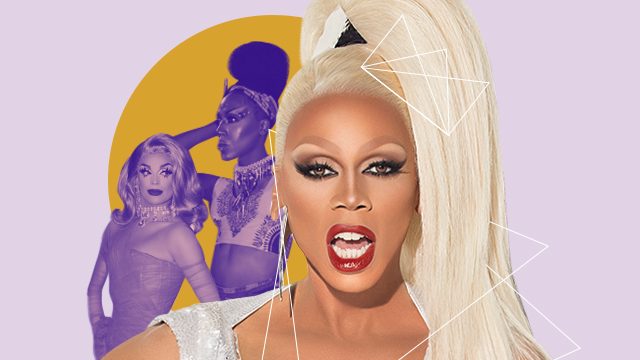SUMMARY
This is AI generated summarization, which may have errors. For context, always refer to the full article.

MANILA, Philippines – It figures that the one night I decide to go out of town, something amazing happens at my favorite gay dive bar.
It was Ariana Grande night, and I’d heard that the dance floor was packed, the revelers slick with sweat and pheromones, screaming along to every single one of the tracks. When the DJ started to transition to the brassy opening strains of “Greedy,” though, the room began to shift as if preparing for some sort of massive gay tidal wave.
But as soon as the first verse hit, the crowd turned silent. People were still dancing but the screaming had stopped and everyone had covered their mouths in complete in unison. It was something to behold, or so I’d heard.
For anyone who isn’t already in on the joke, the queers at the bar were making a reference to a now infamous moment from reality competition show RuPaul’s Drag Race. Frontrunner and crowd favorite, Valentina, was set to lip sync for her life to “Greedy,” but she’d refused to remove the mask covering the lower half of her face because she handn’t learned any of the lyrics. It was unadulterated television magic and fans couldn’t get enough of it.
This is exactly the sort of thing that encapsulates the staying power and cultural command of RuPaul’s Drag Race, a show that somehow defied all odds by transforming from bizarre novelty to full-on pop culture and reality TV juggernaut.
The now Emmy-winning show, which has been around for 9 seasons and 3 spin-offs, including a widely celebrated All-Stars version, is something of an anomaly. It premiered in 2009, on fringe gay TV channel, Logo, by drag royalty and ’90s gay icon RuPaul Charles, RuPaul’s Drag Race is an admittedly bizarre amalgam of reality competition tropes and pure telenovela drama.
Each season finds RuPaul inviting a group of absurdly talented and shamelessly melodramatic drag queens to participate in what he calls “the Olympics of drag” in order to find America’s Next Drag Superstar. RuPaul then has the contestants prove their worth through “Maxi Challenges” that revolve around any one aspect of drag, such as performance, design, or comedy, before eliminating them one by one until only the best – and often bitchiest – is left standing.
The format itself is nothing new, borrowing from the likes of Project Runway and Top Chef, but the show is more than the sum of its parts, not the least of which is RuPaul himself. Part judge, part host, and part talk therapist, RuPaul is the beating heart of the show, a 6’4” vision in drag (6’7” in heels) with a knack for amazing puns (“Impersonating Beyoncé is not your destiny, child”) and doling out pop psychology to his “children.”
Notably, unlike many of the shows from which it unabashedly takes inspiration, Drag Race truly is representative of the best and brightest of its art form. Every one of the contestants can quite literally do anything. There is nothing more fascinating than watching the queens design and sew their own costumes, write their own scripts, choreograph entire dance numbers, and deal with huge personalities and drama all the while looking absolutely impeccable.
And, of course, there is the matter of RuPaul’s Drag Race being the one and only true queer show on television right now.
Over-the-top imagery and catty drag queen drama aside, what truly sets Drag Race apart is its willingness to bring queer stories and identities to the fore. Every single one of the contestants, all of whom fall under the LGBTQ+ umbrella, has had their fair share of hardships that almost all queer kids around the world can relate to.
Drag Race offers audiences, particularly young, queer viewers, an immediate sense of community and belonging by sharing true, deeply personal queer stories, which range from being abandoned as a child to coming to terms with being a trans woman. While viewers come for the drama and the competition, we stay because Drag Race has inadvertently become a safe space for us to boldly celebrate our queerness.
Pop culture pundits have labeled Drag Race the Gay World Cup, but doing so does the show a complete disservice, placing it within a heteronormative paradigm that it so fabulously tries to shatter.
RuPaul’s Drag Race is something wholly different; a pop culture phenomenon that builds on the foundations laid down by our queer forebears along the fringe in order to create a beast so outrageously its own that nothing else could possibly topple it from its shimmering, bedazzled pedestal. The show is pure spectacle and drama but at its core it is tender and raw, pulsing with life and aching for acceptance in a world sorely lacking in it.
And when even social media can no longer serve as a proper escape from the harsh realities of the real world, watching a handful of men in wigs throw shade at each other and lip sync for their lives doesn’t seem like such a bad idea. – Rappler.com
Chino is a freelance culture writer and food stylist.
Add a comment
How does this make you feel?
There are no comments yet. Add your comment to start the conversation.